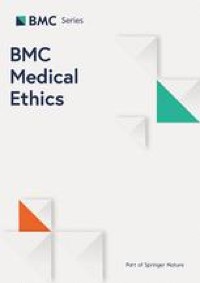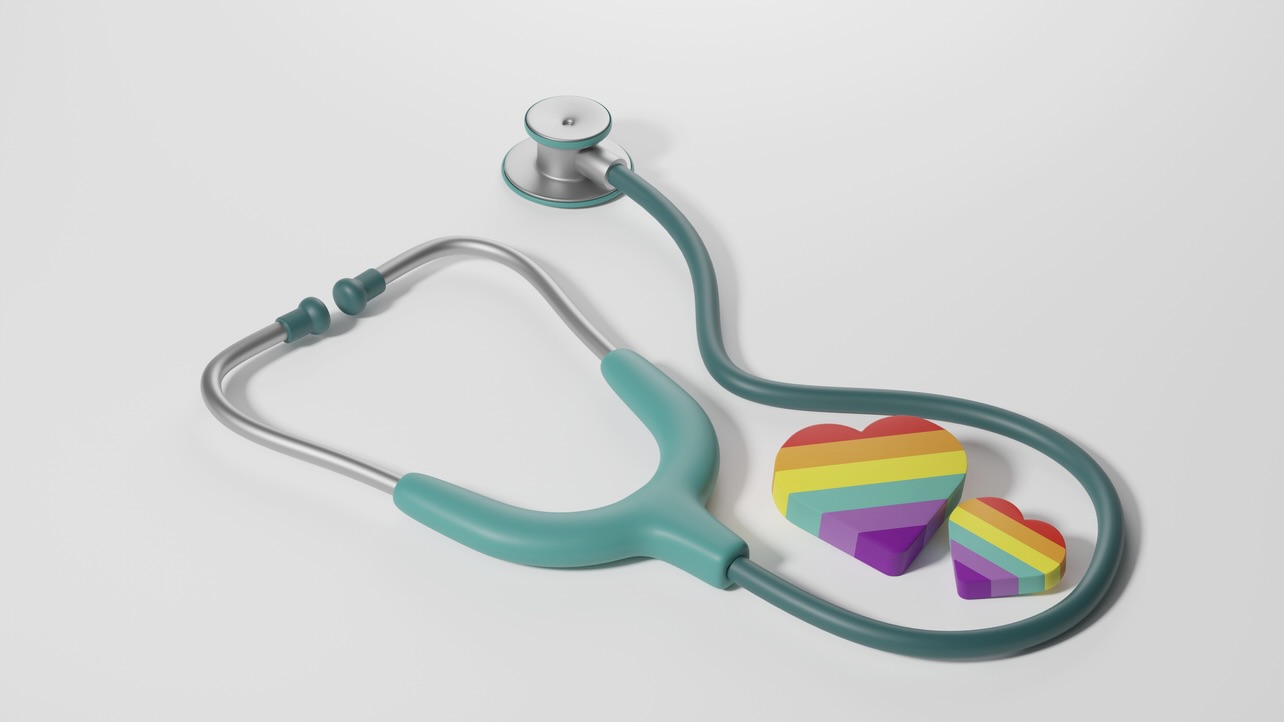Citizen attitudes to non-treatment decision making: a Norwegian survey | BMC Medical Ethics

This survey of a representative sample of the Norwegian adult population indicates that attitudes to NTDs are often in line with national laws and guidelines. Most respondents accept NTDs, also in the context of disorders of consciousness and dementia. While many think the views of next of kin ought to be given weight, few think they should be decisive when conflicting with the views of physicians in charge of care.
Below we summarize the main tendencies in the responses. However, one of the most striking findings is the large variation in the answers, as also found in other studies [13,14,15,16,17]. We will return to this finding in the discussion of implications for practice.
Acceptance of non-treatment decisions
Results indicate large acceptance of non-treatment decision making as such, including where those decisions might ultimately lead to the death of the patient. This is in line with most other European studies [9, 10, 12, 13]. Acceptance rates were higher than in the US study referenced [21]. Although NTDs will continue to give rise to conflicts and controversy in concrete situations in clinical practice, they are accepted by nearly all in general. Large support for a competent patient’s right to refuse life-prolonging treatment indicates that high value is placed on respect for individual autonomy. This is in line with findings from the World Values Survey; here, Norwegians score exceptionally high on so-called «self-expression values» (as opposed to «survival values») which include placing a high value on individual autonomy [25]. That religious affiliation was associated with lower acceptance of NTDs is in line with previous research [21, 22].
Information about the patient’s prior preferences seems to influence respondents’ views about what ought to be decided. However, we also see many respondents indicating that treatment ought to be continued in spite of previously expressed preferences to the contrary, and vice versa. Prior preferences appear to be treated simply as one of several morally relevant factors; thus, other factors, such as the clinical description of function and symptoms, might also be given significant weight.
Making decisions for oneself versus for others
Importantly, respondents are more positive towards NTDs when speaking for themselves, than with regards to what should happen to the persons described in the vignettes. This echoes findings in several other European studies [10, 20]. One interpretation might be that when responding on behalf of oneself, the true sentiment towards NTDs as such comes forth. The respondents thereby show their own view on the acceptability of NTDs leading to death in cases of impaired decisional capacity.
How, then, should the lower rates of acceptance towards NTDs for the patients portrayed in the vignettes be interpreted? We suggest that when respondents are taking a stance with regards to the vignettes, they are placed in the position of making decisions impacting the life or death of another human being. This position is foreign to most ordinary people, whereas physicians might experience it regularly. Although respondents are only asked to provide their opinion on a hypothetical case, the wording of the vignettes demands that the respondent makes a decision, following which the hypothetical patient will die.
It is well known that even physicians might experience end-of-life decision making as a burden, despite their training and experience with such decisions [26]. It is only natural that ordinary people may be shrinking back from shouldering that responsibility, even when only taking place in theory. Respondents may be naturally cautious about making decisions with devastating consequences on behalf of other people, particularly when faced with the scant information provided in the vignettes. On the other hand, when making a decision with regards to oneself it might be easier to accept that one has received sufficient information to make up one’s own mind. In addition, respondents might think that there is some uncertainty concerning the patient’s prior expressed wishes and their applicability to the decision at hand. This could call for reluctance in accepting NTDs.
Responses indicate that respondents are more reluctant towards withdrawing treatment, rather than withholding treatment, in the scenario where the patient wants treatment. (A caveat, however, is that the relevant questions involve different treatment modalities, so they are not fully equivalent.) This is a well-known phenomenon; even though withholding and withdrawing treatment are usually seen as ethically equivalent, they may be emotionally different [27]. The prospect of actively removing treatment from a patient who previously indicated that he or she wanted treatment, is understandably challenging. Again, this need not necessarily be seen as an expression of the view that patient preferences should override medical decisions. Rather, it might be an expression of the natural tendency of respondents to be cautious about making decisions on behalf of others.
Next of kin’s role in non-treatment decision-making
As discussed above, Norwegian health law gives next of kin a limited and clearly demarcated responsibility when the patient lacks competence to consent. The majority of our respondents do not challenge the physician’s decision-making authority. However, many appear to want next of kin’s own preferences (as distinguished from next of kin’s report of the patient’s prior expressed preferences) to be given some weight in decision-making, even when the next of kin’s preferences run contrary to the patient’s previously expressed preferences. This would go against present health law but might be more in line with actual practice [28]. More research is needed to characterise the role that next of kin and their preferences have in actual, clinical decision-making in this context.
Some implications for practice
The findings might carry consequences for how physicians interact with next of kin of patients lacking decisional capacity for whom NTDs are considered. The large variations in the responses indicate a strong need for careful dialogue with patients and next of kin about this kind of questions. To be able to clarify and adapt to individual preferences, but also to clarify and comply with the rules, and possibly sometimes to make informed and well-justified exceptions, is important. Furthermore, the emphasis given to previously expressed wishes and next of kin’s views points to the need for appropriate advance care planning.
Furthermore, what might at first glance appear as a conflict of opinion—the physician wants to stop treatment, the relative wants it to continue—might actually mean that the relative is naturally cautious about being the one to agree with and support the physician in the decision to let a loved one die. This is probably more so if previous dialogue and advance care planning has been sparse or non-existent. Both in advance care planning and shared decision making “here and now”, information about the legal roles and rights should be given. In Norway, the physicians are the ones responsible for making the decisions. Thus, the relatives may “lower their shoulders” and be more forthright with their true feelings about the matter, and also give more information about their knowledge about what the patient would have wanted.
Another application of these results could be the active use of advance care planning to avoid overtreatment [24]. Given the responses regarding what one would want for oneself, it seems that a clear majority would not want to be kept artificially alive, in the case of a serious disorder of consciousness. Through advance care planning such values and preferences might be expressed and recorded in patient charts. This would then constitute important information which would likely be helpful in clinical decision-making about treatment when the patient has lost competence.
A particular point of interest is the rather sizeable minority that do want to be kept alive, despite being in a state of UWS, MCS or dementia. Obviously, health care professionals need to be aware that this subgroup exists. One cannot automatically assume that “no patient would want this life”. Physicians therefore need to engage with patients and next of kin with an open mind, treading carefully, while trying to elucidate the attitudes of the patient or family in question.
Still, according to conventional medical practice and ethics in Norway, keeping alive patients in an UWS or even MCS with little hope of improvement is challenging as well [4]. Whether continued treatment constitutes beneficence is questionable. The risk of doing harm in keeping patients alive in a state of profound disability contrary to the patient’s values is clear. Respecting patient autonomy is difficult when there is no reliable, valid account of the patient’s prior preferences. Allocating scarce health care resources to patients who lack awareness of their existence is arguably not in accordance with distributive justice. Respondents, however, did not indicate costs as an important argument in decision-making here.
The study indicates that although a minority view, some patients and next of kin will find non-treatment decisions ethically problematic. This is in line with findings from other European studies [9, 12]. Our view is that the best way to handle such patients and families would be to provide factually correct, evidence-based information regarding the state of the patient, the prognosis, the risks of suffering and the futility of further treatment. Frequently, information processes such as these are time-consuming, and need to be repeated. In order to achieve a fruitful environment for such conversations, it is important that physicians are aware that critical attitudes to NTDs exist, and that they are legitimate from the patient point of view, even though they go against the prevailing medical and ethical views.
Limitations
According to the belief-sampling model of survey response, the attitudes tested by such surveys are seen as “a kind of memory structure that contains existing evaluations, vague impressions, general values, and relevant feelings and beliefs” [29]. Thus, answers based on this “memory structure”, from respondents presumed to be largely unfamiliar with these particular ethical questions or situations, are more “intuitions” than they are considered ethical judgments. The results of the survey should be interpreted in this light.
Although a non-response bias cannot be ruled out, the moderately high response rate of 40.7% lends some support to the validity of the findings. In the invitation to participate in the survey, panel members were told the survey would assess “attitudes towards ethical issues in healthcare”. Conceivably, respondents with an above average interest in the topic could have been more likely to respond.
A limitation in surveys asking respondents to take stands on “paper cases” is that certain simplifications must necessarily be made. The phrasing of the information and questions involves a risk of these being interpreted differently, or of outright misunderstandings. Respondents are expected to take a stand based on very little information and without the opportunity for follow-up questions or dialogue with experts. This marks an important contrast with real-life decision making.
link






